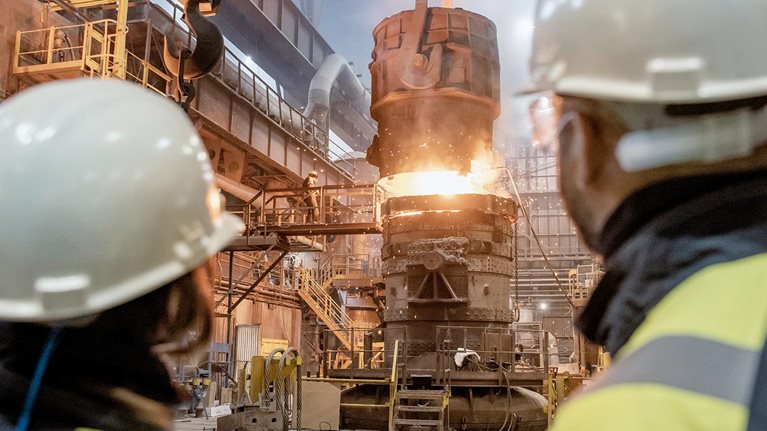Since its inception in 2018, the Global Lighthouse Network (GLN) of advanced manufacturers has demonstrated how leading companies can work toward realizing the full potential of the innovations and advances at the core of the Fourth Industrial Revolution (4IR). Beginning with a select collection of leading-edge organizations, we have seen how lighthouse factories can help entire organizations navigate their modernization journeys, inspiring and catalyzing change among partner organizations along the way.
That’s why GLN now comprises 54 sites, with ten sites added in Q3 2020 (Exhibit 1). This growth reflects the accelerating adoption of core 4IR technologies, and their infusion into daily manufacturing and supply-chain operations, as organizations act on a new urgency to remain competitive—even as others have fallen behind, still stuck in pilot purgatory.

GLN includes companies that have achieved remarkable 4IR advancements within the four walls of factory sites or have effectively implemented end-to-end (E2E) digitization across the value chain. Indeed, in both cases, 4IR technology has powered the reimagination of manufacturing and supply chains across industries and sectors.
Moreover, an essential aspect of lighthouses’ success lies in a dedicated focus on workforce development and capability building through a variety of means. Indeed, these organizations have prioritized their people by transforming the nature of work through intentional upskilling and/or reskilling efforts, empowering workers to realize their potential through new ways of working.
Recent world events, most notably the COVID-19 pandemic, have led to significant disruptions on a scale unprecedented in recent times, affecting nearly every aspect of global industry and calling for a “great reset” across all sectors of the global economy: a decisive set of actions oriented toward delivering value not only to companies themselves but also to society as a whole. While supply-chain shocks have uncovered operational vulnerabilities, they also have presented transformative opportunities for manufacturing and supply-chain leaders. The advances in technology and new ways of working implemented by these trailblazing organizations have enabled them to adapt quickly during disruption, while remaining viable and operational.
Would you like to learn more about our Operations Practice?
Even before the massive disruptions imposed by the pandemic, the gap between 4IR frontrunners and the majority was growing rapidly. Now, four durable shifts in manufacturing and supply chain have emerged as particularly critical:
- Improved agility and customer centricity across E2E manufacturing and supply chains facilitates faster recognition of customer preferences. This, in turn, enables quicker adjustments to manufacturing flows at next-generation, small-scale modular plants to allow higher levels of customization.
- Supply-chain resilience provides a competitive advantage, requiring connected, reconfigurable n-tier supply ecosystems and regionalization.
- Speed and productivity are attained through increased levels of automation and workforce augmentation coupled with upskilling and reskilling efforts.
- Eco-efficiency is increasingly considered a must-have to remain in business and ensure compliance with an increasingly complex regulatory landscape.

McKinsey and the World Economic Forum
The level of agility and resiliency that these shifts require sits at the core of true 4IR innovation, with valuable assets that serve as critical levers during unexpected adversity. The benchmarks and achievements heralded in previous findings about these leading companies remain impressive in their own right. Nevertheless, the turmoil of recent events affords us an even more sophisticated appreciation for the very qualities that have sustained them, and have further advanced the impact that lighthouses have achieved, whether within a single factory or end-to-end, across the organization (Exhibit 2).

Thus, it is in this context of unprecedented challenge that lighthouses serve as models of transformation and beacons of light that can guide us through the storm into a stronger, more resilient future. These organizations are leading the way by demonstrating how to reimagine and rebalance operations into the next normal. They are showing us how companies can provide value not only to their shareholders but also to a broader set of stakeholders including workers, consumers, and the environment—indeed, society at large.
Perhaps most importantly, today’s challenges make clear that lighthouses are not at the end of their transformation journeys—they are only just starting to unlock the true potential of 4IR technologies. As the network of lighthouses grows, its light will shine brighter, helping even more organizations be better prepared to weather the inevitable future storms, whenever and wherever they occur.
This article is adapted from Global Lighthouse Network: Four Durable Shifts for a Great Reset in Manufacturing, as part of the World Economic Forum’s Shaping the Future of Advanced Manufacturing and Production Platform and was created in collaboration with McKinsey & Company. The white paper originally appeared on the World Economic Forum website and is excerpted here with permission.


